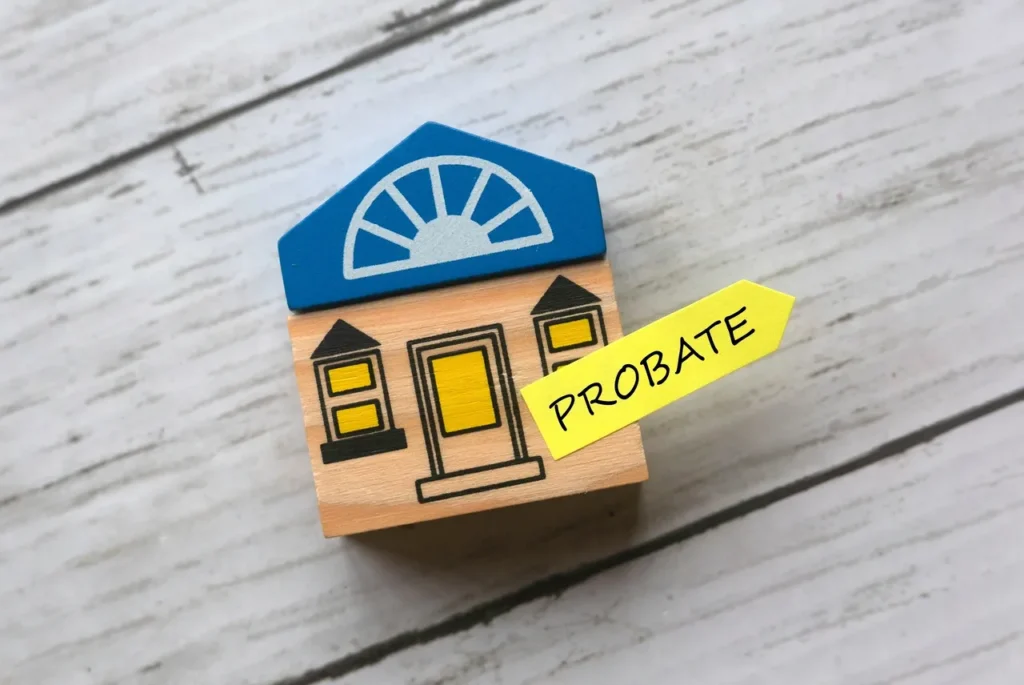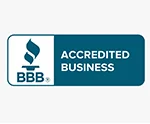Specific steps involved in initiating the probate and grant of administration processes in Alberta.
In Alberta, the probate process initiates the legal procedures required to validate a deceased person’s will and distribute their assets. This section presents a concise, step-by-step overview of the initial phase in the probate process.
1. Obtain the Death Certificate: Begin by securing the official death certificate issued by the Vital Statistics office. This document serves as conclusive evidence of the person’s passing and is a fundamental prerequisite for commencing probate.
2. Locate the Will: If a will exists, locating it is pivotal. Wills detail asset distribution and executor appointments. They might be stored with an attorney, in a safe deposit box, or at the deceased’s residence.
3. Consult a Probate Lawyer: Seek the expertise of a seasoned probate lawyer well-versed in Alberta’s legal landscape. A probate lawyer offers invaluable guidance on navigating the process, ensures adherence to legal protocols, and provides solutions for any complexities that may arise.
4. Prepare the Probate Application: This entails completing the requisite probate forms, tailored to the estate’s complexity and whether a will exists.
5. Gather Required Documents: In addition to the probate application forms, assemble essential supporting documents. These typically encompass the death certificate, the original will (if available), asset and liability records, and other pertinent paperwork.
6. File the Probate Application: Submit the probate application, alongside mandated filing fees, to the Surrogate Court in the judicial district where the deceased resided.
7. Await the Grant of Probate: Following submission, the court scrutinizes the application. It validates the will’s authenticity, confirms the executor’s appointment, and verifies compliance with legal requirements. Upon approval, the court issues a Grant of Probate, endowing the executor with the authority to administer the estate.
8. Publication of Notice to Creditors: After receiving the Grant, it is imperative to publish a notice to creditors in a local newspaper. This notice alerts potential creditors to the deceased’s estate, offering them the chance to assert any outstanding claims.
1. Identify and Locate Assets: Begin by identifying and locating all assets owned by the deceased, encompassing real estate, financial accounts, investments, vehicles, personal items, and valuables. A thorough search ensures no assets are overlooked.
2. Notify Relevant Parties: Inform pertinent entities like financial institutions, insurance companies, employers, and government agencies about the individual’s passing. This initiates necessary adjustments in asset ownership and management.
3. Obtain Appraisals: Some assets, such as real estate, art, jewelry, or collectibles, may require professional appraisals to determine their fair market value. Appraisers assess assets impartially, considering factors like condition, rarity, age, and demand.
4. Gather Supporting Documentation: Accurate asset valuation necessitates gathering relevant supporting documents, including property deeds, bank and investment statements, insurance policies, appraisals, and any paperwork proving ownership and value.
5. Determine Outstanding Debts and Liabilities: Integral to asset valuation is identifying the deceased’s outstanding debts and liabilities, encompassing mortgages, loans, credit card balances, taxes, and unpaid bills. Collect all pertinent documentation for a precise assessment.
6. Calculate the Net Estate Value: With asset valuation completed and debts determined, calculate the net estate value by subtracting total debts from total assets. This net value forms the foundation for subsequent probate steps, including debt settlement and estate distribution.
1. Obtain the Probate Application Form: Start by obtaining the latest probate application form directly from the Surrogate Court, either from their website or in person at the court office. It is crucial to use the most current version, as outdated forms might not be accepted.
2. Gather Required Information: Before completing the probate application form, assemble all necessary information. This includes the deceased’s full legal name, date of birth, date of death, and their last residence’s location. Additionally, collect data on the deceased’s assets, beneficiaries named in the will, and any outstanding debts or liabilities.
3. Complete the Probate Application Form: With all essential information in hand, meticulously fill out the probate application form. Accuracy and completeness are vital, as errors or omissions could stall the probate process. If you’re unsure about certain sections, consider seeking legal guidance or consulting a probate lawyer.
4. Gather Supporting Documents: Alongside the probate application form, compile various supporting documents to accompany your application. These typically include:
o The original will (if available), along with any codicils (amendments).
o A certified copy of the death certificate.
o An inventory of assets and their estimated values.
o Appraisals or valuations for specific assets.
o Documentation of outstanding debts or liabilities.
o Any other relevant documents, such as insurance policies or trust agreements.
5. Prepare Affidavits and Forms: Depending on the estate’s complexity, you may need to prepare additional affidavits or forms to bolster your probate application. These might encompass an affidavit of witness to the will, an affidavit of due execution, or an affidavit of heirship. Thoroughly review the Surrogate Court’s requirements to ensure accurate preparation of all necessary documents.
6. Submit the Probate Application: After preparing all required documents and forms, submit your probate application to the Surrogate Court. Prior to submission, make copies of all documents for your personal records. Typically, you’ll be required to pay a probate application fee when submitting your application.
Once you have prepared all the required legal documents for the probate application in Alberta, the next step is to submit your application to the Surrogate Court. This section will provide a detailed breakdown of the fourth stage in the probate process.
1. Review and Double-Check: Before submitting your probate application, it is crucial to review and double-check all the documents and forms for accuracy and completeness. Make sure that you have filled out the probate application form accurately and attached all the necessary supporting documents. Additionally, ensure that you have made copies of all the documents for your own records.
2. Pay the Probate Application Fee: At the time of submitting your probate application, you will be required to pay a probate application fee. The fee amount will depend on the value of the estate. It is advisable to check the Surrogate Court’s website or contact the court office to determine the exact fee and acceptable payment methods.
3. Submit the Application: Once you are satisfied that all the documents are in order and the probate application fee has been paid, you can submit your application to the Surrogate Court. You will need to visit the court office in person and provide the original documents along with the required number of copies. The court staff will review your application to ensure that everything is in order.
4. Acknowledgment of Receipt: After you have submitted your probate application, the court staff will provide you with an acknowledgment of receipt. This document serves as proof that you have submitted your application to the court. Keep this acknowledgment safe, as you may need to refer to it later in the probate process.
5. Waiting for Processing: Once your probate application has been submitted, it will undergo a review process by the Surrogate Court. The processing time can vary depending on the workload of the court and the complexity of the estate. It is important to note that during this time, you may be contacted by the court if any additional information or documents are required.
6. Approval of the Probate Application: Upon completion of the review process, the Surrogate Court will either approve or reject your probate application. If approved, you will receive a court order granting you the authority to administer the estate. This court order is also known as the Grant of Probate. It is an essential document that allows you to carry out your duties as an executor or administrator of the estate.
Submitting the probate application to the Surrogate Court is a crucial step in the probate process. It is essential to ensure that all the documents are accurate, complete, and submitted in a timely manner. In the next section of this guide, we will delve into the subsequent stages of the probate process, including the issuance of the Grant of Probate and the administration of the estate.
Once the probate application has been approved by the Surrogate Court and the Grant of Probate has been issued, the next step in the probate process is the appointment of an estate representative. The estate representative, also known as an executor or administrator, is responsible for managing and distributing the assets of the estate according to the deceased person’s wishes and applicable laws.
Here are the key points to consider during the appointment of an estate representative:
1. Identify the Estate Representative: The first task in appointing an estate representative is to determine who will take on this role. In many cases, the deceased person may have already named an executor in their will. If this is the case, the named executor should be notified and asked if they are willing and able to act as the estate representative. If there is no named executor or if the named executor is unable or unwilling to act, the court may appoint an administrator to fulfill this role.
2. Qualifications and Eligibility: It is important to ensure that the estate representative meets the qualifications and eligibility criteria set out by the Surrogate Court. In Alberta, the estate representative must be at least 18 years old and mentally capable of fulfilling their duties. The court may also require the estate representative to provide a bond or obtain insurance to protect the estate’s assets.
3. Obtain Consent and Acceptance: Before the appointment can be made official, the estate representative must provide their consent and acceptance of the role. This can be done through signing a document known as the Acceptance of Appointment. By signing this document, the estate representative acknowledges their responsibilities and agrees to act in the best interest of the estate and its beneficiaries.
4. Obtain Letters of Administration: Once the estate representative has been appointed, they will need to obtain Letters of Administration from the Surrogate Court. These letters serve as official proof of their authority to act on behalf of the estate. The estate representative may be required to provide a copy of the Grant of Probate, along with any other supporting documents, to obtain the Letters of Administration.
5. Notify Relevant Parties: After the appointment of the estate representative and the issuance of Letters of Administration, it is important to notify all relevant parties, such as financial institutions, government agencies, and potential beneficiaries. This ensures that everyone involved is aware of the estate representative’s authority and can communicate with them regarding the administration of the estate.
6. Begin Estate Administration: With the appointment of an estate representative and the necessary legal documents in hand, the administration of the estate can officially begin. This involves gathering and managing the assets of the estate, paying any debts or taxes, and distributing the remaining assets to the beneficiaries as outlined in the deceased person’s will or as determined by the applicable laws of intestacy.
Appointing an estate representative is a crucial step in the probate process as it establishes the legal authority and responsibility of an individual to administer the estate. By carefully following the necessary procedures and guidelines set out by the Surrogate Court, the estate representative can fulfill their duties and ensure the efficient and lawful distribution of the deceased person’s assets. In the next section of this guide, we will explore the various tasks and responsibilities of the estate representative during the administration process.
Once the estate representative has been appointed, the next crucial step in the probate process is to identify and settle the debts and liabilities of the estate. This is an important task that ensures the estate can be properly administered and the remaining assets distributed to the beneficiaries.
Here are the key points to consider when identifying and settling the debts and liabilities of the estate:
1. Gathering Information: The estate representative should begin by gathering all relevant financial documents and records to determine the debts and liabilities of the deceased person. This includes bank statements, credit card bills, loan documents, and any other financial records that may indicate outstanding debts.
2. Notifying Creditors: It is the responsibility of the estate representative to notify creditors of the deceased person’s passing. This can be done by sending a copy of the death certificate along with a letter informing them of the death and providing a deadline for submitting any outstanding claims. This gives creditors an opportunity to make a claim against the estate for any debts owed.
3. Evaluating Claims: Once creditors have been notified, the estate representative must evaluate and review each claim to determine its validity. This may involve contacting creditors directly, requesting additional documentation, or seeking legal advice if there are doubts about the legitimacy of a claim.
4. Prioritizing Payments: In some cases, there may not be enough assets in the estate to cover all outstanding debts and liabilities. In these situations, the estate representative must prioritize payments based on the rules and regulations set out by the Surrogate Court. Generally, secured debts such as mortgages or car loans are paid first, followed by unsecured debts such as credit card bills or personal loans.
5. Negotiating or Settling Debts: Depending on the circumstances, the estate representative may need to negotiate with creditors to settle outstanding debts. This can involve negotiating lower payoff amounts or setting up installment plans to repay the debts over time. It is important for the estate representative to keep detailed records of all negotiations and settlements for transparency and accountability.
6. Paying Debts: Once the validity of the claims has been established and negotiations, if any, have been completed, the estate representative can start paying off the debts and liabilities of the estate. This is done using the available assets in the estate, such as cash, bank accounts, or the proceeds from the sale of assets.
7. Documenting Payments: It is essential for the estate representative to maintain accurate records of all payments made to creditors. This includes keeping copies of receipts, invoices, and any other relevant documentation to demonstrate that the debts and liabilities of the estate have been properly settled.
By diligently identifying and settling the debts and liabilities of the estate, the estate representative ensures that the financial affairs of the deceased person are properly handled. This step is crucial in achieving a fair and efficient distribution of the estate’s remaining assets to the beneficiaries. In the next section of this guide, we will explore the responsibilities of the estate representative in administering the assets of the estate.
Once the debts and liabilities of the estate have been properly identified and settled, the next step in the probate process is to distribute the remaining assets to the beneficiaries. This is the final stage of the probate process and involves the estate representative ensuring that the estate’s assets are distributed in accordance with the wishes of the deceased person and the applicable laws.
Here are the key points to consider when distributing the remaining assets to beneficiaries:
1. Reviewing the Will: The estate representative must carefully review the deceased person’s will to understand how the assets should be distributed. The will may specify specific bequests, such as specific items or amounts of money, to certain individuals or organizations. It is important to ensure that the distribution follows the instructions outlined in the will.
2. Identifying Beneficiaries and Heirs: The estate representative should identify all beneficiaries and heirs who are entitled to receive a share of the estate. This may involve conducting research, contacting family members, or consulting with legal professionals to determine the rightful beneficiaries.
3. Valuing the Assets: The estate representative must assess the value of the remaining assets to determine the total estate value. This may involve obtaining professional appraisals for valuable assets such as real estate, jewelry, or artwork. Accurate valuation is essential for fair distribution among the beneficiaries.
4. Fair and Equal Distribution: The estate representative has the responsibility to distribute the assets of the estate in a fair and equal manner. This means ensuring each beneficiary receives their rightful share based on the instructions in the will or the applicable laws of inheritance.
5. Distribution Methods: Depending on the nature of the assets, the estate representative may choose different methods of distribution. This can include physical distribution of personal belongings, transfer of ownership for real estate, or liquidation of assets to distribute cash to the beneficiaries.
6. Resolving Disputes: In some cases, disputes or disagreements may arise among the beneficiaries regarding the distribution of assets. The estate representative should be prepared to handle and resolve these disputes amicably, either through mediation or legal means, if necessary.
7. Documentation and Records: It is crucial for the estate representative to maintain accurate records and documentation of the distribution process. This includes keeping copies of receipts, transfer documents, and any other relevant records to demonstrate that the assets have been distributed correctly.
By diligently following the steps outlined in this guide, the estate representative ensures a smooth and efficient distribution of the remaining assets to the beneficiaries. Proper distribution is essential in honoring the wishes of the deceased and ensuring that their loved ones receive their rightful shares. In the final section of this guide, we will explore the important responsibilities of the estate representative in administering the assets of the estate after distribution.














